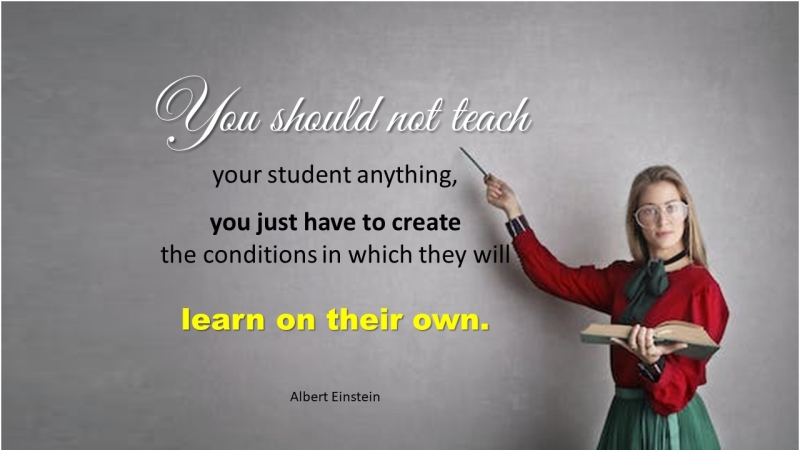
Choose Positive: Life is Too Short to Waste on Negative People
LIFE IS TOO SHORT TO WASTE ON NEGATIVE PEOPLE. It’s a simple but powerful statement that serves as a reminder of how important it is to spend time with good people. As human beings, we are social creatures. We thrive on connection and relationships with others. Our relationships can significantly impact our mental health, well-being, and happiness. When we surround ourselves with positive people, we create a positive environment that supports our growth, success, and happiness. It’s essential to surround ourselves with positive people because they can:
- Lift us when we’re feeling down.
- Inspire and motivate us to achieve our goals
- Provide emotional support during challenging times
- Challenge us to be our best selves
- Help us see the positive side of things, even in difficult situations
Negative people, on the other hand, can drain our energy, make us feel unhappy, and bring us down. It’s crucial to be mindful of the people we surround ourselves with because they have the power to shape our lives and our outlook on life.
The Negative Impact of Negative People
Negative people can have a profound impact on our lives. They can drain our energy, lower our self-esteem, and make us unhappy. Here are some examples of how negative people can impact our lives:
- They can bring us down: Negative people are often pessimistic and focus on the negative aspects of a situation. Being around them can make us feel down and unhappy.
- They can drain our energy: Negative people can be exhausting. They complain frequently, and their negativity can drain our energy and leave us tired and unfulfilled.
- They can affect our self-esteem: Negative people can be critical and judgmental, lowering our self-esteem and making us feel inadequate.
- They can limit our potential: Negative people discourage us from pursuing our goals and dreams.
Effects of Negativity on Our Mental Health and Well-Being
Constant exposure to negativity can seriously damage our emotional and psychological well-being. The impact of being in a negative crowd can be as follows:
- Increased stress: Negative people can cause us to feel stressed and overwhelmed, leading to physical and emotional health problems.
- Depression and anxiety: Negative people can trigger feelings of depression and anxiety, negatively impacting our mental health and well-being.
- Lowered self-esteem: Negative people can make us feel bad about ourselves, leading to lower self-esteem and confidence.
- Limited potential: Discouragement from negative people can keep us from realizing our full potential and achieving our desired happiness.
It’s crucial to be mindful of damaging people’s impacts on our lives and take steps to limit our interactions with them. By choosing positive relationships, we can improve our mental health and well-being and live happier lives.
Signs of Negative People
It’s not always easy to identify negative people in our lives. They can be charming and charismatic and hide their negativity behind a veil of positivity. However, some common traits and behaviors can help us identify negative people. Some warning signals are as follows:
- They complain a lot: Negative people frequently complain about their lives, work, and the people around them.
- They criticize others: Negative people often judge and rebuke others, pointing out their flaws and mistakes.
- They focus on the negative: The negative aspects of a situation are magnified in the minds of negative people, while the positives are overlooked.
- They are pessimistic: Negative people have a negative outlook on life and often expect the worst to happen.
- They lack empathy: Negative people tend to lack empathy and have little concern for the feelings and emotions of others.
- They are energy vampires: Negative people can be exhausting to be around, draining our energy and leaving us tired and unfulfilled.
It’s important to identify negative people in our lives so that we can limit our interactions with them and focus on building positive relationships.
How to Identify Negative People in Our Lives
Identifying negative people is the first step towards limiting our interactions with them. Here are some ways to identify negative people:
- Pay attention to their language: Negative people tend to use negative language, complain frequently, and criticize others.
- Observe their behavior: Negative people tend to be pessimistic and focus on the negative aspects of a situation. They can be critical, judgmental, and lack empathy.
- Trust your gut: Feeling drained or unhappy after spending time with someone could be a sign that they are harmful.
It’s essential to be mindful of the people we surround ourselves with and their impact on our lives. By identifying negative people, we can limit our interactions with them and surround ourselves with positive, uplifting relationships that inspire us to be our best selves.
Reasons Why We Keep Negative People Around
Despite the negative impact that negative people can have on our lives, it’s not always easy to completely cut them out. Here are some reasons why we might keep negative people around:
Fear of Being Alone
One of the most common reasons we keep negative people around is the fear of being alone. We may worry that if we cut negative people out of our lives, we won’t have anyone left. However, it’s essential to remember that quality is more important than quantity in relationships. Having a few positive, uplifting relationships is better than many negative, draining ones.
Loyalty to Negative People
We may feel a sense of loyalty to negative people, primarily if we have known them for a long time or if they are family members. However, it’s important to remember that loyalty should never come at the cost of our well-being. It’s okay to set boundaries and limit our interactions with negative people, even if it means disappointing them.
The Belief that Negative People Can Change
We may hold onto the belief that negative people can change, especially if they show occasional signs of positivity. However, it’s essential to be realistic about our expectations. While people can change, it can only happen sometimes or with effort. Negative people must be willing to change, seek help, and work to become more positive and uplifting.
Surrounding ourselves with positive, uplifting relationships is essential for our mental health and well-being. By identifying negative people in our lives and limiting our interactions with them, we can make space for positive, fulfilling relationships that inspire us to be our best selves. Remember, there is always time to make changes and prioritize our well-being.
The Benefits of Surrounding Ourselves with Positive People
Surrounding ourselves with positive people can have a significant impact on our lives. Some advantages of surrounding yourself with positive individuals include the following:
Improved Mental and Emotional Health
Negative people can cause stress, anxiety, and even depression. In contrast, positive people can have the opposite effect. Being around positive, supportive people can help us feel more secure, confident, and optimistic. They can inspire us to focus on the good things in life rather than dwell on the negative.
Increased Happiness and Positivity
Positive people have a contagious energy that can rub off on those around them. We can boost our sense of joy, hope, and contentment by surrounding ourselves with positive individuals. It can also help us see the bright side of things, increasing happiness and success.
Enhanced Motivation and Success
Surrounding ourselves with positive people can significantly enhance our motivation and success. Positive people encourage and support us in our pursuits. Their optimism and enthusiasm can inspire us to work harder and achieve more. By being around positive people, we can build a strong network of support that can help us navigate challenges, overcome obstacles, and achieve our goals.
Greater Resilience
Putting ourselves around positive people can strengthen and help us handle problems and setbacks better. This is because positive people often offer encouragement, support, and optimism, which can help us bounce back from adversity. By building good relationships, we can create a robust support system that allows us to handle the ups and downs of life with more ease and grace.
While it’s not always easy to cut negative people out of our lives, it’s essential to remember the benefits of surrounding ourselves with positive people. Positive people can help us feel happier, more confident, and more optimistic about life. They can inspire us to focus on the good things in life and help us achieve tremendous success and fulfillment in all our lives. So, make a conscious effort to surround yourself with positive, uplifting people who will help you become the best version of yourself.
Life is Better with Positive People Around You
When we surround ourselves with positive people, life becomes more enjoyable, fulfilling, and meaningful. Positive people have the power to inspire, motivate, and uplift us. They can make even the most challenging situations feel more manageable. Here are some ways positive people can impact our lives:
- They can help us stay focused on our goals and dreams.
- They can provide a sounding board for our ideas and plans.
- They can offer valuable advice and support when we need it most.
- They can make us feel valued, appreciated, and loved.
- They can challenge us to grow and become better versions of ourselves.
People significantly impact our lives because they are the source of our joy, strength, and appreciation. The people we share our lives with profoundly impact our quality of life. These people lift us when feeling down, celebrate our successes, and encourage us to keep pushing ourselves.
Positive Relationships and Connections
Positive relationships and connections can improve our mental and emotional health, increase our happiness, and help us become the best versions of ourselves. When we surround ourselves with optimistic, encouraging, and supportive people, we feel more motivated and inspired to pursue our goals and dreams. Positive people also have a way of making difficult situations easier to bear because they offer their love, understanding, and empathy.
Examples of Positive People
Think about the positive people in your life. Maybe it’s a close friend who always knows how to make you laugh, a family member who supports you no matter what, or a mentor who has helped you succeed in your career. These people have likely had a significant impact on your life and well-being.
Benefits of Positive People
When we spend time with positive people, we are more likely to experience several benefits, including:
- Increased happiness and positivity: Positive people have a way of infecting others with their vibrant energy, which can help us feel happier, more content, and more fulfilled in life.
- Improved mental and emotional health: Positive people can help us manage stress and anxiety and provide us with the support and encouragement we need to overcome challenges and setbacks.
- Inspiration and motivation: Positive people often have a can-do attitude, which can inspire and motivate others. Seeing someone else achieving their goals can encourage us to pursue our dreams with renewed vigor and determination.
How Positive People Can Inspire and Motivate Us
Positive people can inspire us in many ways, including:
- Encouragement: Positive people often motivate us to keep going, even when we feel like giving up.
- Role models: Positive people can be role models for us, showing us how to live with optimism and kindness and achieve our goals.
- Support: Positive people can be a source of support and guidance when we face challenges, helping us to find our way through difficult times.
Having positive people around us can significantly affect our mental health, well-being, and overall happiness. Positive people can inspire, motivate, and uplift us, while negative people can drain our energy and bring us down. It’s essential to be mindful of the people we surround ourselves with and choose positive relationships that support our growth, success, and happiness.
The Importance of Letting Go of Negative People
Letting go of negative people in our lives can be difficult. It can be challenging to cut ties with people we’ve known for a long time or to distance ourselves from family members or close friends. However, it’s essential to understand the benefits of letting go of negative people and how it can positively impact our lives.
Strategies for Letting Go of Negative People
- Acknowledge that the relationship is toxic: Recognize the person’s negative impact on your life and accept that things may not change.
- Set boundaries: If you can’t cut the person out of your life entirely, it’s essential to set boundaries to limit their influence on your life.
- Communicate your feelings: Try to talk with the person and express how their behavior affects you.
- Seek support: Reach out to supportive friends, family members, or a therapist to help you through the process of letting go.
Benefits of Cutting Ties with Negative People
- Improved mental health: Cutting ties with negative people can help alleviate feelings of anxiety, depression, and stress.
- Increased self-esteem: Letting go of people who bring you down can improve your self-confidence and self-worth.
- More time and energy for positive relationships: Getting rid of the toxic people in your life will free you up to focus on the people who truly matter: those who support and encourage you.
How to Maintain Boundaries with Negative People
- Be clear about your boundaries: Communicate what you’re comfortable with and what is not.
- Stick to your boundaries: Don’t give up your principles to keep the peace.
- Limit contact: If possible, reduce your time with the negative person.
- Practice self-care: Make time for activities that promote self-care and help you recharge, such as exercise, meditation, or hobbies.
Life is indeed too short to waste on negative people. Surrounding ourselves with positive, uplifting people can tremendously impact our mental and emotional health, happiness, and overall well-being. Although letting go of negative people can be difficult, it’s essential to prioritize our needs and satisfaction. By identifying positive people in our lives, joining groups or communities that promote positivity, and making new friends with similar values and interests, we can create a supportive and uplifting network of people to surround ourselves with.
Conclusion
As we’ve discussed, negative people can significantly impact our mental and emotional well-being. They can even hold us back from achieving our goals and dreams. On the other hand, surrounding ourselves with positive people can bring immense joy, motivation, and inspiration into our lives.
If someone consistently brings negativity and toxicity, it may be time to consider cutting ties or setting clear boundaries. If we’ve known a toxic person for a long time or feel loyal to them, it’s not easy to sever a relationship with them and move on. But we must remember that we deserve to prioritize our well-being and happiness.
Let’s focus on identifying the positive people in our lives, whether through existing friendships, joining groups or communities that promote positivity, or making new friends with similar values and interests. We can all benefit from a positive support system that lifts us and motivates us to be our best selves.
In conclusion, we should prioritize surrounding ourselves with positive people who inspire and motivate us and let go of negative people who hold us back. Life is too short to waste on negativity, and we owe it to ourselves to prioritize our happiness and well-being.
CLICK THE IMAGE TO LEARN MORE





